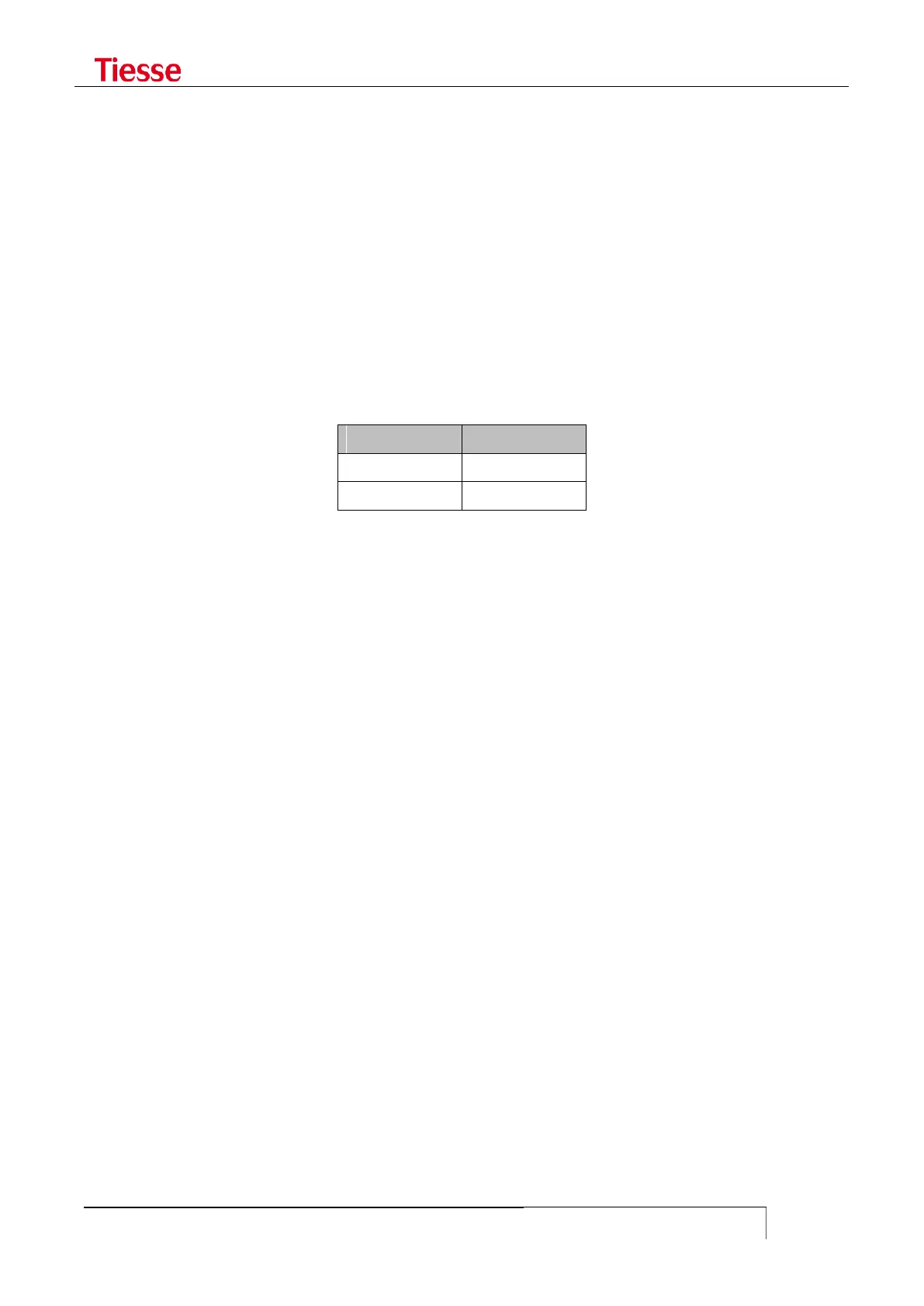RS232 Interface (IKR) for Imola routers
TERMINAL SERVER CONFIGURATION
To select the application for the two ports you can use:
set serial0-appl term-server
set serial1-appl term-server
To set the Terminal Server parameters on the first serial port:
set tserv0 <param> <value>
To set the Terminal Server parameters on the second serial port:
set tserv1 <param> <value>
In its factory configuration, Imola is set in such a way that each serial port is associated with a
TCP/IP socket, according to the following scheme:
Data received on the socket are sent to the serial port associated and data from serial port are sent
to the associated socket, according to the Terminal server function.
If the serial port receives data, but no application has logged on to the corresponding socket port,
these are sent to an IP address and to a configurable port.
The following commands are related to the first port; those for the second are the same but instead
of 0 (tserv0) you have to write 1 (tserv1).
set tserv0 tty-speed <value>
sets the transmission speed on the serial port. 2400, 4800, 9600, 19200, 38400, 57600, 115200 are
valid values, while the default one is 9600.
set tserv0 tty-flowcontrol
enables the hardware flow control on the serial port
set tserv0 no-tty-flowcontrol
disables the hardware flow control on the serial port
set tserv0 tty-parity <0-1-2>
configures the type of parity on the first serial port you can use the following command. A value of
0 indicates no parity, 1 odd parity, 2 even parity. Default value is 0.
set tserv0 tty-stopbits <1-2>
configures the number of stop bits on the first serial port. Default value is 1.
set tserv0 tty-databits <7-8>
sets the number of data bits on the first serial port. Default value is 8.
set tserv0 tty-check-dsr
enables the control of DSR signal: when the router becomes active, it makes a TCP connection
towards the configured IP address and then it will send on it the data received from the serial port.
When the signal is turned off, it pulls down the TCP connection.
